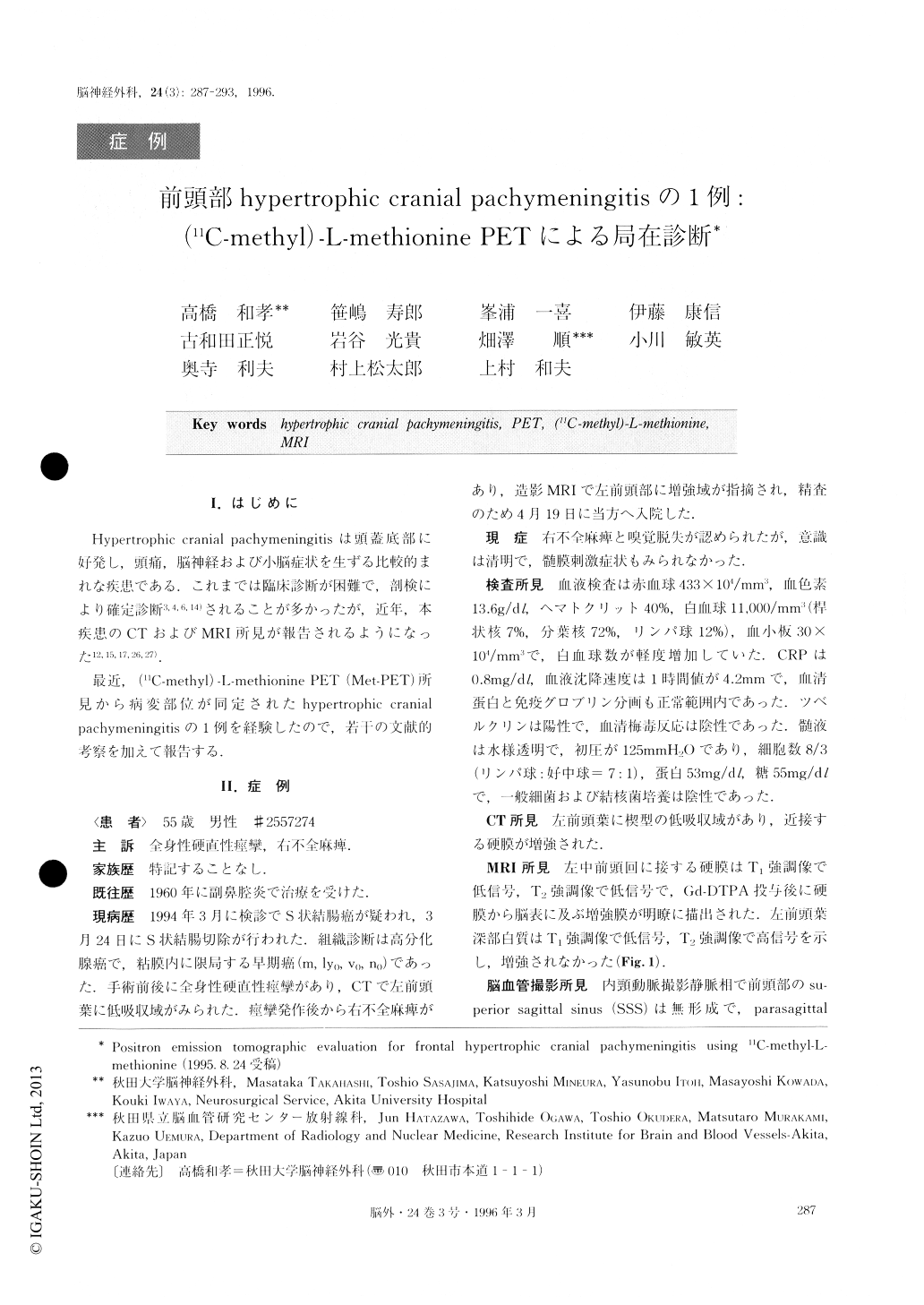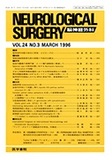Japanese
English
- 有料閲覧
- Abstract 文献概要
- 1ページ目 Look Inside
I.はじめに
Hypertrophic cranial pachymeningitisは頭蓋底部に好発し,頭痛,脳神経および小脳症状を生ずる比較的まれな疾患である.これまでは臨床診断が困難で,剖検により確定診断3,4,6,14)されることが多かったが,近年,本疾患のCTおよびMRI所見が報告されるようになった12,15,17,26,27).
最近,(11C-methyl)—L-methionine PET(Met-PET)所見から病変部位が同定されたhypertrophic cranialpachymeningitisの1例を経験したので,若干の文献的考察を加えて報告する.
A case of frontal hypertrophic cranial pachymenin-gitis was presented with positron emission tomography (PET) using (11C-methyl)-L-methionine (11C-Met).
A 55-year-old male developed right hemiparesis after generalized tonic convulsion one month prior to admis-sion. MR images revealed patchy enhancement extend-ing from the dura mater to the cerebral parenchyma surrounding high T2-weighted signal in the left frontal region. Left carotid angiogram showed atresia of the rostral superior sagittal sinus and obliteration of the cortical veins associated with compensatory venous channels coursing in the frontal deep white matter.PET demonstrated high 11C-Met uptake in the area cor-responding to the enhancing lesion on the MR images. The ratio of lesion/normal cortex was 1.58 as an indica-tor of selective uptake in the lesion. The contralateral temporal gray matter was representative of a normal cortex. In contrast, 11C-Met did not accumulate in the frontal white matter where T2-weighted MR images showed abnormal high intensity lesion. This suggested that the frontal white matter lesion was derived from vasogenic edema due to venous infarction. The patient underwent an uneventful exploratory biopsy. The dura mater had proliferated to a thickness of 3.5mm and was tightly adherent to the left middle frontal gyrus. Mi-croscopically, the thickened dura mater where the trac-ers had accumulated was composed of abundant col-lagenous fibers together with diffuse infiltration of in-flammatory cells, including predominantly lymphocytes, plasma cells, and neutrocytes. The lymphocytes, which proved positive in both UCHL-1 and L26 staining, had no atypism. Histological findings corresponded to hypertrophic pachymeningitis. Met-PET clearly repre-sented viable and infiltrative zones of inflammatory cells. The patient's neurological symptoms and signsgradually improved. Follow-up MR images three months after the surgery showed the enhancing lesion to be diminished and a marked regression of the vasogenic edema.
Spatial determination of viable lesions permitting dif-ferentiation from biological inactive or vasogenic edemais an important guideline in selecting an appropriate surgical procedure in the diagnosis and treatment of hypertrophic cranial pachymeningitis. Met-PET would appear useful in delineating inflammatory lesions such as hypertrophic cranial pachymeningitis.

Copyright © 1996, Igaku-Shoin Ltd. All rights reserved.


